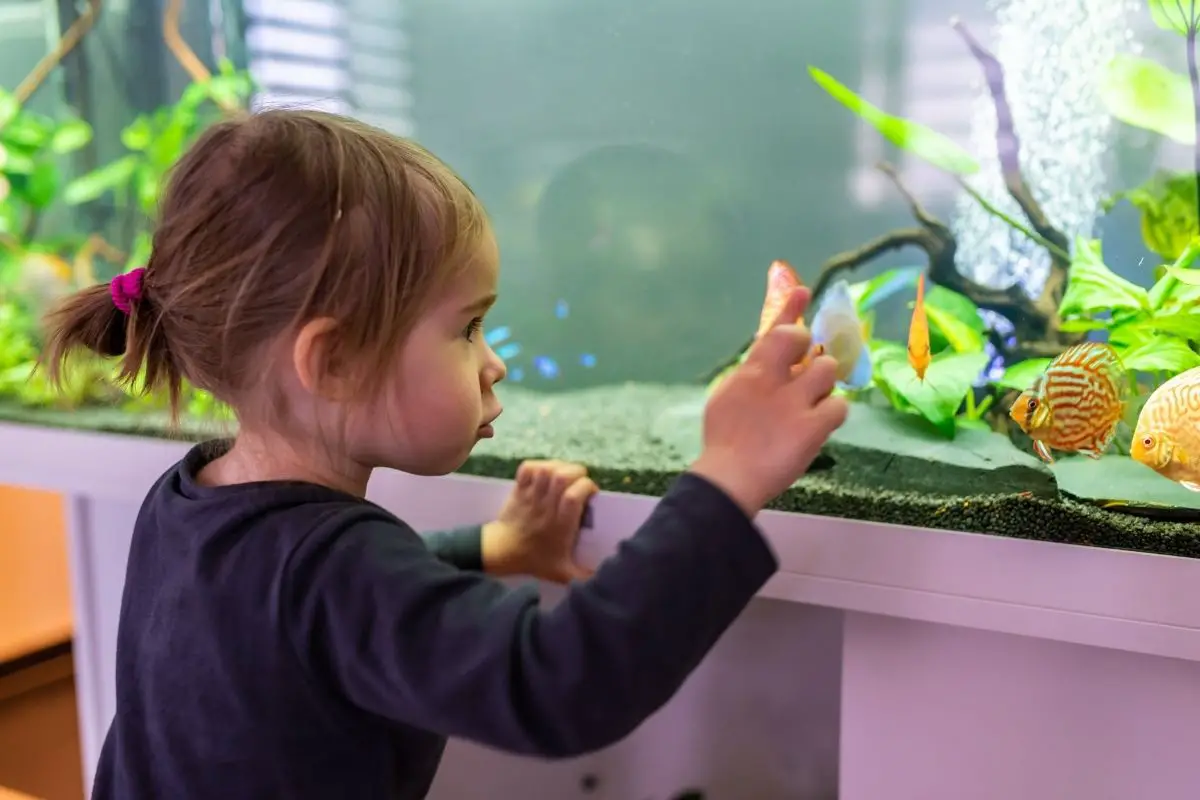6 Types of Sand for Fish Tanks | Choose Your Sand Wisely
When my kids asked about pets, there was no way I was ready to deal with a cat or a dog! Constant trips to the vet and lots of poop to clean was not something I was ready for.
So, a fish tank sounded like to right compromise to me and the kids were sufficiently happy. Nevertheless, they too require attention!
Choosing the right sand for your fish tank is an important decision.
It not only changes the whole look and feel of your tank, but it’s also difficult to change once your tank is up and running. Plus, I am all for as-low-as-possible-maintenance pets!
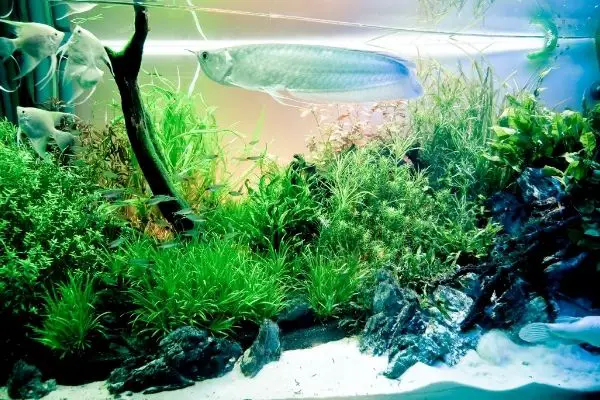
To help you pick the right sand for your tank, we’ve reviewed a range of great options. Our top pick is the Seachem Flourite Black Sand. It’s good quality sand that is suitable for growing plants, and it looks terrific.
Choosing the type of sand for your new aquarium can be difficult if you don’t know what to look for, so keep on reading to know more!
Best Sand for Aquariums
Best Overall — Seachem Flourite Black Sand

Seachem Flourite Black Sand is a natural black sand. Black is an excellent color for substrate in a tank and can make the right accessories pop. If you have not seen black sand before, you may expect it to be jet black. However, it’s actually a slightly softer black. This is because the color is not created using artificial coloring.
This sand is made from fractured clay. That means it is inert and won’t affect the pH of your tank. It also won’t break down over time and is an ideal medium for growing live plants in your tank.
Best Sand for Reef Tanks — Nature’s Ocean Bio-Activ Live Aragonite Reef Sand

Nature’s Ocean Bio-Activ Live Aragonite Reef Sand is high-quality sand for saltwater tanks. The sand is 100% live, so it is tank-ready. You don’t need to cultivate it. It will be ready to start filtering water straight from the bag.
It’s a good option for both new and established tanks, as it won’t disrupt the pH of a living tank. In addition, the sand settles quickly and causes minimal clouding.
The sand is excellent for a natural look in your tank. It’s traditionally sand-colored with small shells mixed in to create a more attractive and textured look.
Best Budget Option — FairmountSantrol AquaQuartz White Pool Filter Sand

AquaQuartz White Pool Filter Sand is a great introductory option because it is one of the cheapest options and one of the highest quality. The features that make it suitable for a pool filter also make it ideal for a fish tank.
The grains are small and very uniform. It’s chemical-free and should not alter the pH of your tank at all. It’s also a reasonably heavy sand. This is good because it means that after your fish sift through it, the grains will fall back down to the bottom. So they won’t cloud up the water.
This size bag should be enough to create a good layer in a 50-gallon tank. The sand is white with some black and brown flecks in it. It makes a good backdrop for colorful ornaments.
Best for a Natural-Looking Tank — CaribSea Super Naturals Aquarium Sand

Caribsea Super Naturals Aquarium Sand is a great option for tanks that are styled to look as natural as possible. The sand has a great color, and it holds it well, even after it’s been in a tank for a long time.
The particle size is very small. This means it’s good at stopping debris from sinking, but it may also get too compacted for sand digging creatures to enjoy. The very fine grain does mean that it will need a lot more washing before you first put it into the tank.
The sand is pH neutral, so it is an option for adding to an established tank. It is also free of artificial paints and dyes.
Best for Small Tanks — Stoney River White Aquatic Sand

Stoney River White Aquatic Sand is a uniform medium grit sand. It’s coarse enough that you don’t need to worry about it compacting and forming dead pockets. However, despite its larger grain size, it is quite lightweight. This means you may have to take some care while cleaning it.
The grains are really high quality and have been coated in an inert, nontoxic layer. That means you can add it to an established tank without concern. It washes up quickly as well before first use.
Although described as white sand, the color is not bright white. Instead, it is a pleasing natural tone that serves to nicely highlight the appearance of dark-colored fish.
Best for Planted Aquariums — UP Aqua Sand for Aquatic Plants
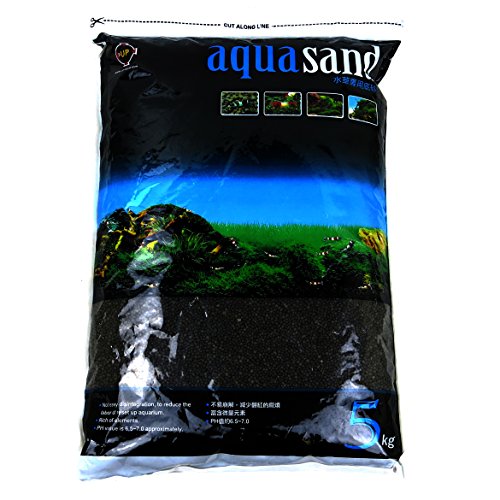
UP AQUA Sand for Aquatic Plants is specifically designed to be a good substrate for planted tanks. In addition, it helps to keep the pH at around 6.5, which tends to be better for plants and is ideal for some species of fish.
As is common with sand designed for plants, you will find that the color fades over time as the sand is broken down. However, because of the ratio of clay to fertilizer, it lasts longer than other similar products you can find.
What to Consider When Buying Sand for an Aquarium
Size of Your Tank
When you buy sand for your tank, you need to make sure that you buy the right amount of sand. A good depth of sand is around 1 inch. So to calculate the volume of sand, you need to multiply the length and width of your tank by 1inch. You can then use an online calculator to convert that to the weight of sand that you need.
Type of Water
If you are setting up a saltwater tank, you will need to choose live sand. This is sand that forms a part of the living ecosystem in your tank. The bacteria that live in this sand form a crucial part of your filtration system and must be managed with as much care as your fish. As they, in turn, support your fish as well.
If you are setting up a freshwater tank, you have a lot more options for sand. You don’t need living sand, so you can use things like play sand if you want.
Type of Fish

Some fish will eat the bacteria off the surface of your substrate, while others may rub themselves against it. There are also types of fish and tank dwellers that will bury themselves in your substrate.
If any of the fish you want to put in your tank behave in this way, it’s a good idea to check what the best type of sand for them is. Usually, you need fine-grain sand, but you should always check.
Color
The only thing that the color of your sand affects is the look of your aquarium. The fish don’t mind what color the sand is. It’s a good idea to consider what accessories or plants you’d like to have in your tank, as this can help you decide which color will work best.
Cleaning
If you are planning to have sand as your substrate, you should also consider how you will keep it clean. Sand sifting creatures can help with this, but you will still need to clean the sand periodically to ensure there is no formation of anaerobic bacteria. The main ways to do this are with a gravel vacuum/siphon or using a small shovel/your hand to agitate the sand.
Grain Size
There is a divide amongst fish owners when it comes to which substrate to use. One of the biggest debates surrounds grain size. Sand is a small grain substrate. That means that excess food and waste don’t sink into it and decompose, so cleaning it can be a lot easier. The downside to sand is that you have to agitate it every now and then to prevent ‘dead’ pockets from forming. These are areas where anaerobic bacteria can grow.
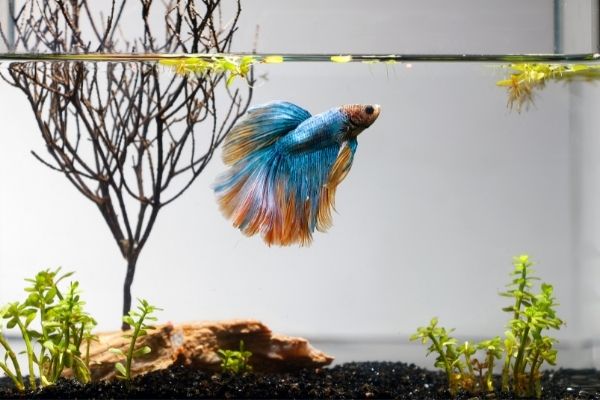
If you have sand-dwelling creatures in your tank, you may want to opt for smaller grain sand. This is often kinder on these animals and allows them to burrow. Coarse sand can look very appealing but is less suitable for these types of animals. It can be a good choice if you have a predator-only tank, though.
The main alternative to sand is a substrate with a much larger grain size, for example, gravel. Water can flow through the gravel, so there’s no risk of ‘dead’ pockets. However, food and waste can be buried, so more intensive cleaning is needed.
pH
If the sand you choose is not aquarium-specific sand or contains a lot of calcium carbonate, then it may alter the pH of your tank water. If you are setting up a new tank, it’s not as much of a problem. You can leave the tank to rest for a while before you start adding your fish. However, if you add this sort of sand to an established tank, it can harm your fish.
Plants
Having living plants in your tank can be a great way to help oxygenate the water, feed your animals, and filter the water. However, they do also need a little bit of care to help them grow. If you want your plants to grow roots and thrive, it’s a good idea to choose a substrate that has fertilizer in it and has a lower pH. This can encourage plant growth. However, you should check if these conditions will also be suitable for the fish in your tank.
Frequently Asked Questions
Can you use play sand in an aquarium?
It is possible to use most types of play sand in aquariums. However, it is essential to wash the sand before use.
Can you use pool filter sand in an aquarium?
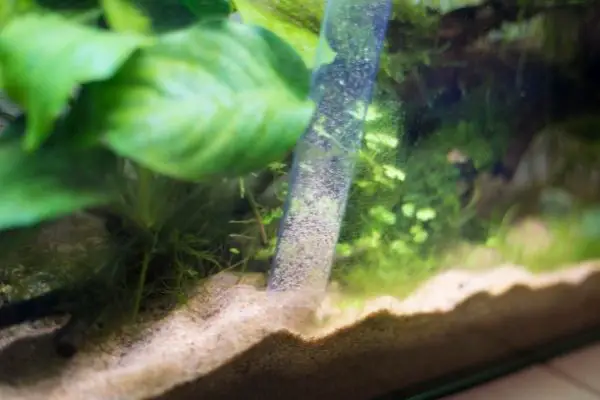
Pool filter sand is an excellent option for use in an aquarium. The fine grains are gentle on fish and sand-dwelling species. It’s also very clean and free from impurities. The only big downside is the high cost.
How does sand compare to gravel for a fish tank?
Both are very popular substrates. However, sand has a lot of advantages over gravel, as well as one key drawback.
The advantage of sand is that it is a softer substrate which can be important for some fish. It allows you to get sand-filtering creatures in your tank as well. The other advantage of sand is that food and debris tend to sit on top of it, making it easy to clean. Finally, sand is an ideal substrate if you wish to have plants in your tank.
The significant disadvantage of sand is that if you don’t agitate the sand now and then, pockets of anaerobic bacteria can form. These can be harmful to your fish.
Last update on 2024-07-10 / Affiliate links / Images from Amazon Product Advertising API

